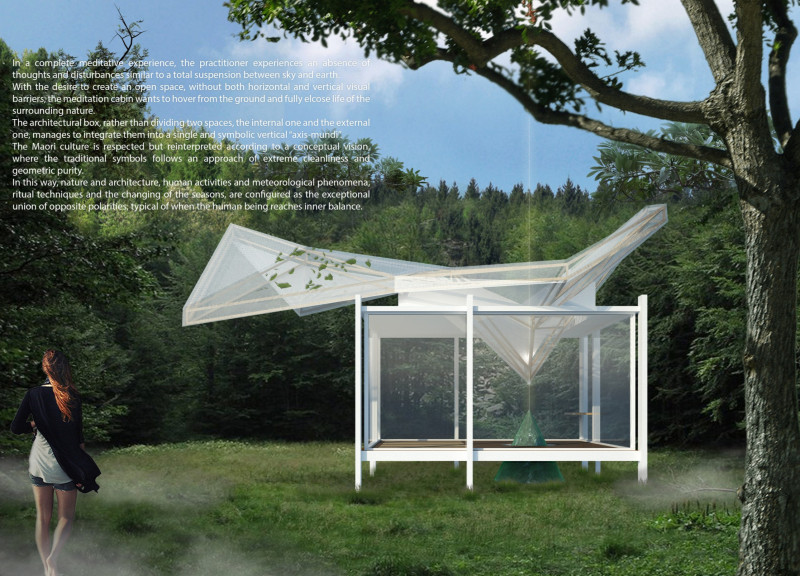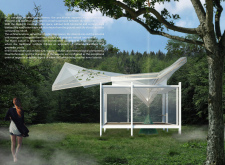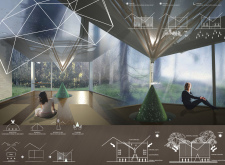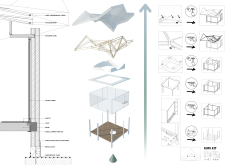5 key facts about this project
The meditation cabin is designed to be a calm retreat located within a natural landscape. It serves as a space for individuals searching for quiet moments of reflection. The structure elevates the user experience by creating a feeling of floating between the earth and the sky, merging indoor and outdoor environments. The design concept emphasizes openness, allowing for a dynamic relationship with the surrounding nature.
Conceptual Framework
At the core of the design is a vertical "axis-mundi," representing balance between individuals and the natural world. The shape of the cabin encourages a connection that goes beyond traditional boundaries. Influences from Maori culture are evident, presented in a way that respects its origins while adapting to contemporary needs. Geometric forms reflect purity and simplicity, creating an inviting atmosphere.
Activities and User Experience
The cabin facilitates various activities, including meditation with natural incense and the use of floral essences. These experiences are carefully woven into the design to enhance the sense of tranquility. The space is also designed for evening use, where candlelight can create a warm and calming environment. Users are encouraged to fully engage with their surroundings in a way that fosters mindfulness and reflection.
Materiality and Construction
Construction of the cabin involves a carefully chosen set of materials. Linen waterproof fabric provides durability and weather resistance. Wooden beams and curbs connect the structure to its environment, while glass frames allow for clear views of the landscape. Steel corner profiles add strength, and structural multilayer panels improve thermal insulation, contributing to energy efficiency. This choice of materials supports the design, reinforcing the bond between the cabin and the natural world.
Large windows are a notable feature, allowing ample natural light to fill the interior and create a sense of openness. As the light shifts throughout the day, it changes the mood within the cabin, making the space feel alive.






















































